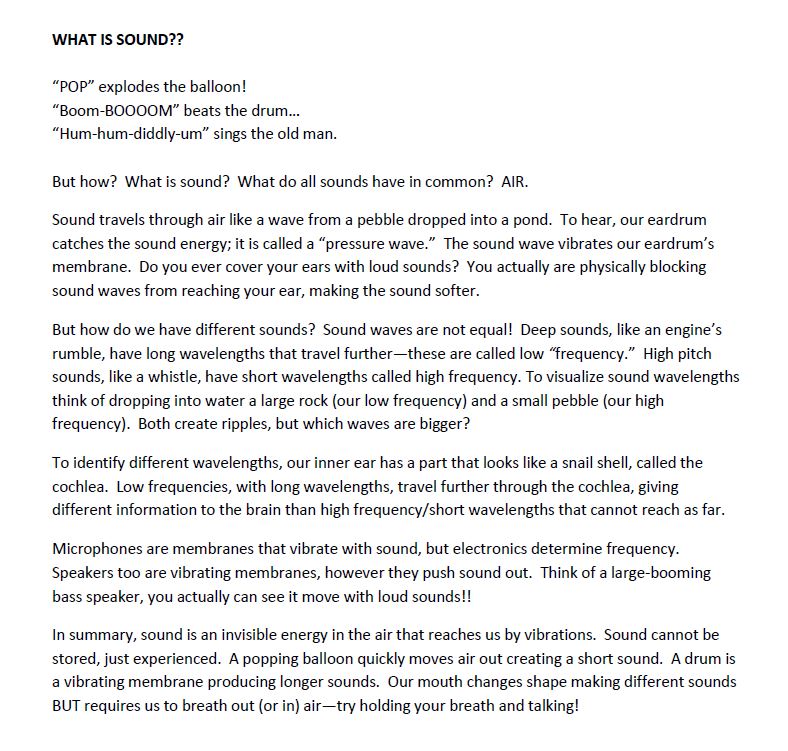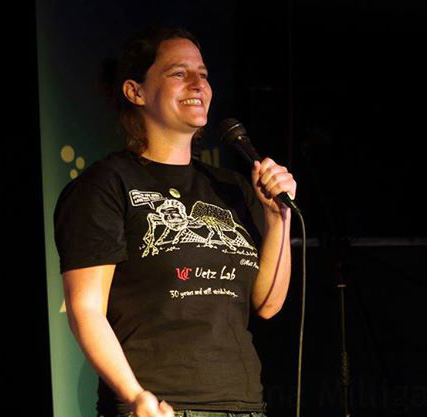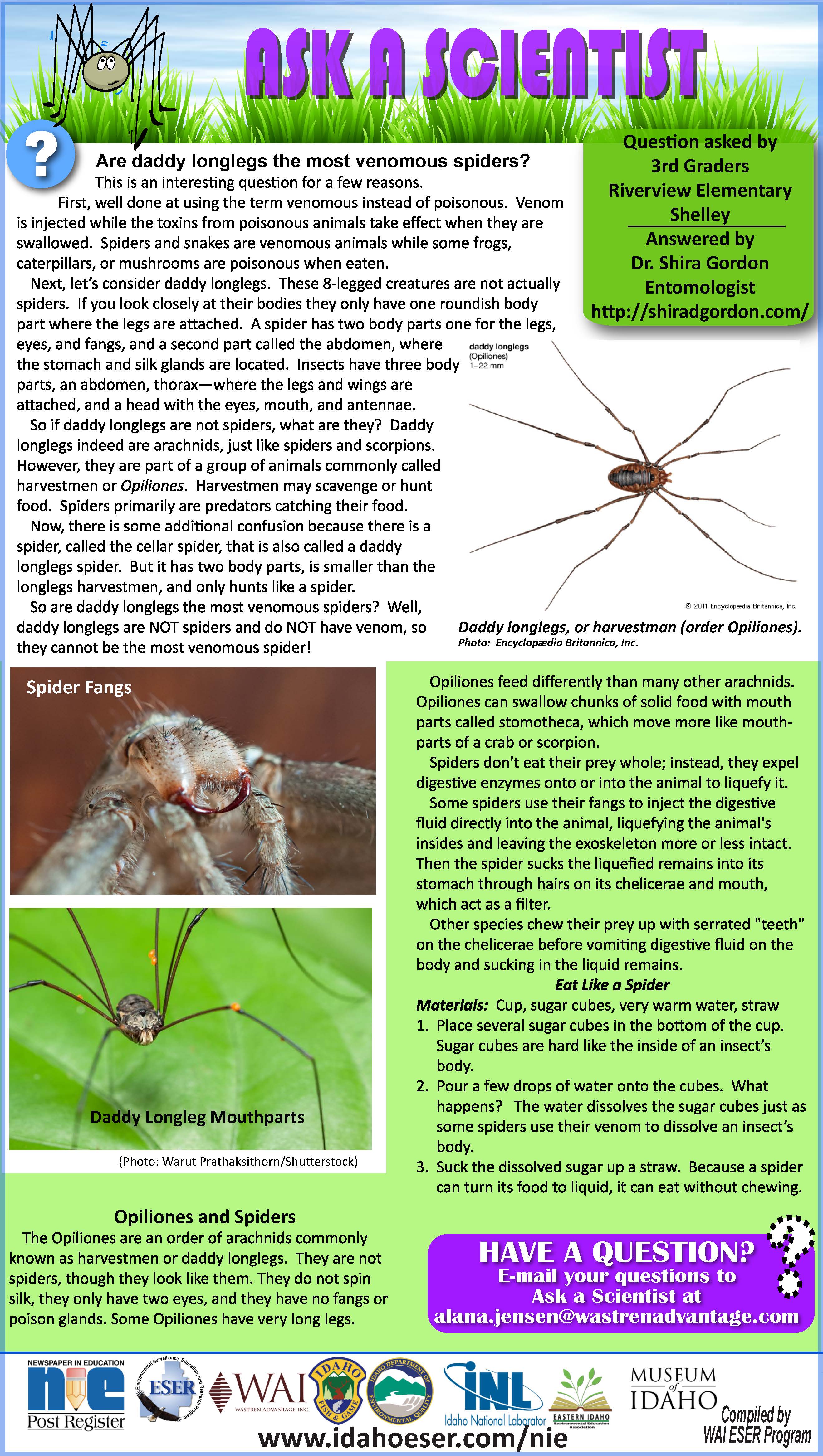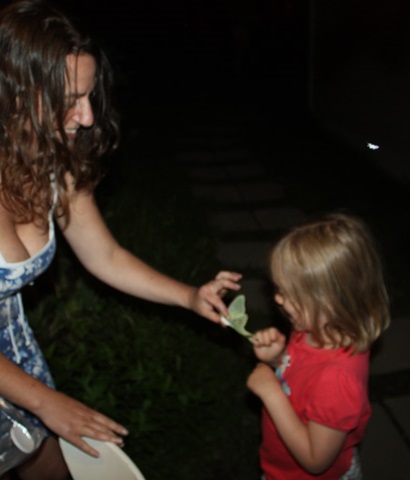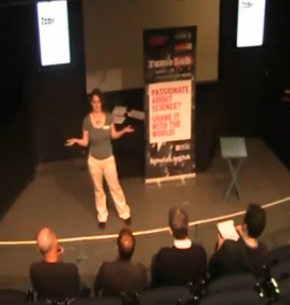Science Communication
As exciting as I find science and my research, I recognize not everyone is as keen. Therefore, I have enjoyed sharing my enthusiasm about science and nature with people in the community.
Professionally, I have given many lab tours, demonstrations, and talks to school groups through adults. But I have also partaken in and led many activities where we bring insects and spiders to the public—for both children and adults. In addition, I have participated in science education for the public in activities like Bright Club Comedy and FameLab–or even the neighborhood children!
This page is intended to give a sampling of my experiences sharing biology with those around me.
I commonly give presentations in the classroom or the field explaining my research.
Here is a clip from an outreach to high school students.
I have participated the past two years in the Alan Alda Flame Challenge science communication contest. The goal is to explain complex science topics for the level of an 11 year old. In preparing these, I thought hard about what is the main concept and how to create an idea that someone new to thinking about the concepts can understand the important components. It was a fun challenge for me and I too learned key elements–especially that I still need to keep it even more simple! My two entries answered what is sound and what is energy.
Bright Club Comedy
Glasgow, Summer 2013
https://www.youtube.com/watch?v=ex-yl4fvOx0&feature=youtu.be
Across the UK, various universities are forming groups that bring scientists across any discipline out of the lab and into the public to share their research in public friendly manner. Many of these events happen at pubs during a science night. The idea is to connect with people while creating laughter and teaching them a few facts as you go. Building your set happens with the support and encouragement of others so even if you are not on stage you can help other folks. I participated in a show that was officially part of the Glasgow 2013 Science Festival:
A sample article written for an Ask a Scientist column, part of the Idaho Environmental Surveillance, Education, and Research Program.
The question was: Are daddy longlegs the most venomous spiders?
Neighborhood Education to Children
I enjoy teaching children advanced tidbits of science whenever I can. For example, in New Hampshire, the neighborhood children were excited by my moth collecting and what flies at night. So, I shared my enthusiasm and taught one 5-year old child about moths, hearing to avoid bats, and how to tell if it is a male moth (by looking for fanned antennae). She drew me a picture of a Luna Moth we saw at her light one night–even remembering to draw it as a male!
In addition, years I have participated in many outreach activities where I bring insects and spiders to the public to teach them and let them handle live animals. These events include activities such as: S.O.S. Day—Scary Oozy Slimy, Charlotte’s Web Spider outreach, ‘Eat a Bug’ lunch, and booths at university and nature center events. I have also been a summer camp’s naturalist teaching ages 4-14 the fun niches in their backyard.
Fame Lab is an international organization that teaches people to effectively communicate science to a broad audience. In 2011, I participated in the Scotland heat, making it to the finals round. I strive to continually improve how I can reach people of all ages and backgrounds and the training from FameLab has helped me recognize how to keep it simple and fun.
https://www.youtube.com/watch?v=J3uEKx7XgPU&list=PL3CBBCA8DAF2DA246&index=57
https://www.youtube.com/watch?v=2vHBGl4qGBc&list=PL3CBBCA8DAF2DA246&index=42
Finalist entry for the Young Researchers Improving Lives Competition
Title: Using insect ‘ears’ to understand novel methods of sound reception
Describe in 100 words or less how your research will improve lives, using layman’s language.
Insects have evolved hearing at least seven independent times. Consequently, insect ‘ears’, called tympana, evolved in various locations (legs, wings, thorax, abdomen) working by different mechanisms. My research focuses on how different types of insects’ tympanal ear drums structurally function. As a biologist, I work with engineers who model the ears. Results of our collaboration will yield the ability to mimic these tiny natural hearing devices and build mechanical receivers, such as miniature microphones. In addition, studying the diverse biological ways of sound reception may have novel implications for sound detection with unknown biomedical, technological, and evolutionary applications.

